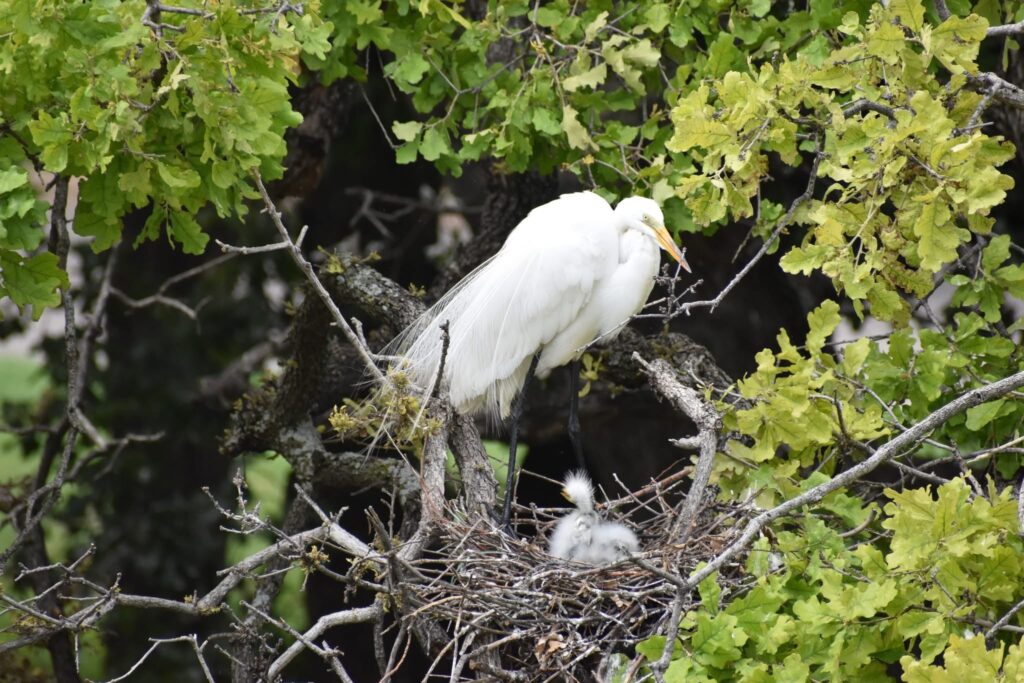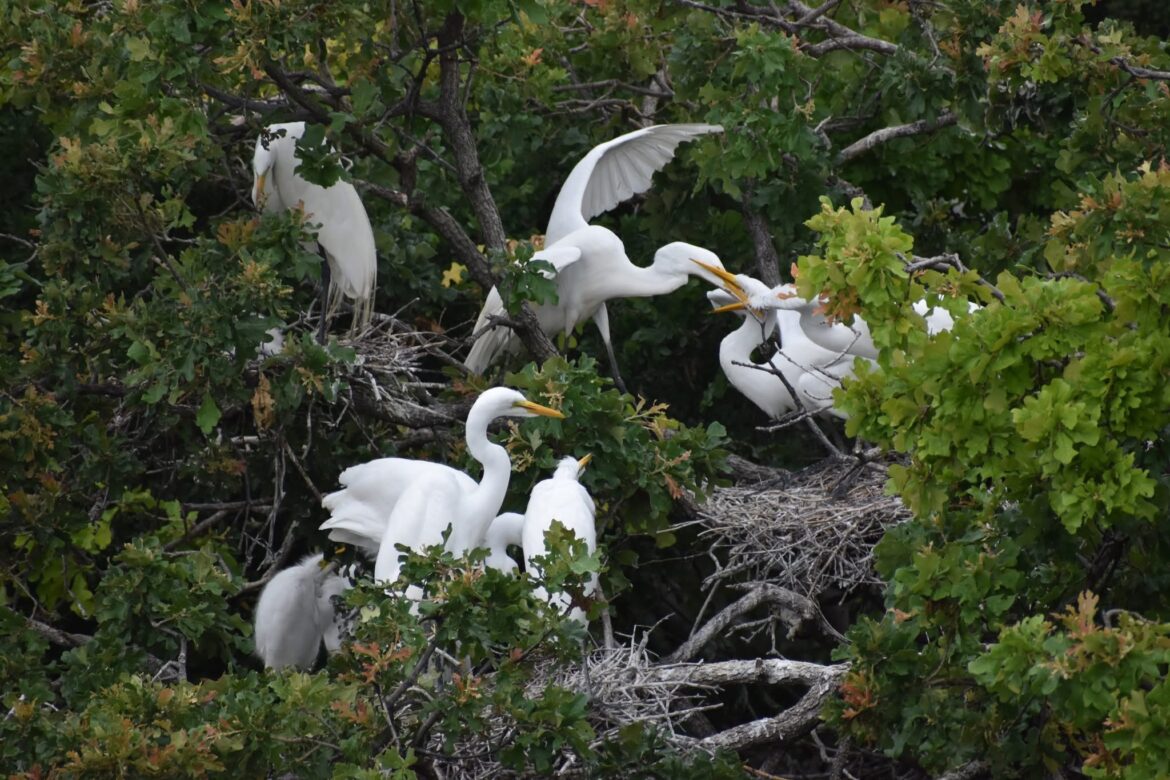By Martin Hagne
Have you ever heard mention of a rookery? Or colonial waterbirds? If you have, it was probably in association with large egret-type birds. But there are many other birds that nests in rookeries. Colonial waterbirds gather annually during nesting season to make up large groups called rookeries or colonies.
Many of these species use islands along the Texas coast to lay their eggs and raise their young every summer. When they gather together, they increase the chances of their young surviving. Being in a large group means that many individuals will be looking out for predators, and will be more likely to see them and drive them away.

A rookery is a colony of nests. It can also mean a dense collection of housing, but we’re talking about birds here, not humans!. Colonial waterbirds are a group of aquatic birds that nest closely together in a rookery area. These colonial birds include at least some of the many species of terns, gulls, pelicans, cormorants, herons, and egrets.
Rookeries are most often located on islands along the coast here, but some use brush or trees in marshes, swamps, peninsulas, mainland beaches, and even in urban habitats. The ground-nesting birds in this group sometimes use rooftops or gravel parking lots as a rookery site too. The keys to a rookery area are a lack of predators, good foraging habitat nearby, proper nesting shrubs, trees, or ground, and a lack of human disturbances.
We can split colonial birds into two groups: ground nesters and shrub/tree nesters. Ground nesters, including black skimmers and some terns, like low places like islands and beaches. They need little vegetation, and create a nest by hollowing out a small depression in sand or shell to lay their eggs. Their eggs are always well camouflaged to blend in with the ground. A very few species of ground nesters, such as laughing gulls, construct nests of grass.
Shrub and tree nesters, includes most of the herons and egrets, build nests from twigs, sticks and grass in shrubs or trees. They prefer to build nests a little higher off the ground to keep them away from predators like coyotes, raccoons, snakes, and alligators.
Gulf Coast Bird Observatory often does survey work around rookeries and they are fascinating, albeit a bit stinky! Most rookeries are inaccessible, but one that is easily viewed in late spring and early summer is at the Smith Oak Sanctuary owned by Houston Audubon, located in the small High Island community, in Galveston County.
There are at least 27 species of colonial waterbirds that live and nest on the Texas coast. They are: Brown Pelican, White Pelican, Double Crested Cormorant, Neotropic Cormorant, Anhinga, Great Blue Heron, Great Egret, Tricolored Heron, Little Blue Heron, Snowy Egret, Reddish Egret, Cattle Egret, Black-crowned Night Heron, Yellow-crowned Night-Heron , Roseate Spoonbill, White Ibis, White-faced Ibis, Laughing Gull, Gull-billed Tern, Forster’s Tern, Common Tern, Royal Tern, Least Tern, Sooty Tern, Caspian Tern, Sandwich Tern, and Black Skimmer.
GREG 1 – A group of adult Great Egrets on nesting in a rookery, one feeding a chick.
GREG2 – An adult Great Egret guarding its rookery nest with its chick.
Photos by Patrycja Burk

